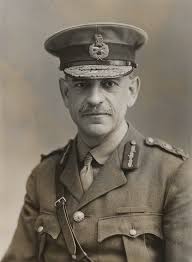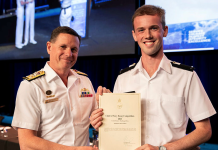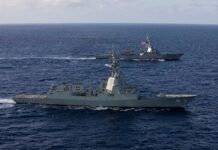TO WHAT extent was the Australian Imperial Force’s experience in the First World War similar to the experience of the other components of the British Empire’s army? This article focuses on two other British dominions, which also served alongside with the AIF, during 1914-1918, namely: New Zealand and Canada.
India also had a vital role as its high losses in WWI testify. Along with South Africa, and other dominions, it is not under discussion. New Zealand combined with Australia to forge the ANZAC Corps. Grey captured its essence. ‘These men had left their homelands in October-December 1914 for the war in Europe and been diverted to … the defence of Egypt and the canal against possible Turkish attack.’ (1) Grey also observed that Gallipoli inspired the ‘birth of a nation’ narrative in two countries. Both later soldiered on at the Western Front, which created a shared history. Two Antipodeans had earned a credible reputation in wartime Europe. Yet it was significant that of all dominions, Australian soldiers were not to be executed by the British. ‘The single biggest difference between the AIF and any other force in the British Empire armies related to the death penalty. (2)
The strength of dominion formations also differed. Stevenson noted that: ‘Even the New Zealanders, who could boast the strongest British division on the Western Front, were quick to offer their tally of success.’ (3) The AIF was a volunteer service, and two referendums to introduce conscription were defeated. (4) In contrast, New Zealand was obliged to adopt conscription in 1916. (5) Early idealisation of the quintessential image of our Bushmen has surrendered to a more realistic appreciation that the composition of the AIF was drawn from major urban areas, i.e., from the larger metropolitan capitals. Peacetime depressions can offer employment when wartime needs men. Grey counters Bean’s romanticism of our warrior ethos.
Canada deserves its own extended study. In common with other ‘Commonwealth’ allies, they too contributed on the Western Front and also earned their reputation for their offensive prowess as shock troops. Cook relayed their experience. ‘A steady trickle of Military Service Act (conscripted) men were coming overseas … and would soon be replacements for several thousand casualties the Corps had suffered during the last four months. The major goal in the summer was to transition from trench fighting to semi-open and open warfare.’ (6) The Australians were similarly seized of those tactics as the war progressed. In common with all armies, their leaders were troubled by ill-discipline, unrest, falling morale and a diminishing supply of replacements, forcing some wounded men, after recovery, to return to the front line. Any analysis of inter-personal relations between officers and men invites a study of comparative cultures. As well, one should not argue needlessly about the composition of the officer corps, in any of the dominions, in the so-called mobilizing of the elites. As officers fell, soldiers from the ranks would step forward, trained to take their place. Leadership is expected from all levels in the soldiery.
What of command and control? The dominions had their own discrete styles of leadership despite being subsumed under overall British high command. General Sir John Monash (pictured) acquitted himself well as a worthy commander, particularly with his applied concept of mass warfare, which integrated many combat arms, mechanized as airborne. By 1918, forged by combat, Australians had risen to high positions to command their national formations through merit. Yet efforts to lionize Monash, including a push to make him a posthumous Field-Marshal, are self-limiting. Crawley deflated yet another myth. ‘Monash’s role needs to be put in perspective … Peter Pedersen (concluded) … that Monash’s plans and tactics were based on an approach to war that was adapted, rather than invented.’ (7)
All armies on the Western Front, whether British or dominion forces, shared a similar characteristic, having to maintain an aggressive posture, high morale and the need to inculcate and sustain a fighting spirit. Consider the British army. Sheffield attempted to categorise this military phenomenon. ‘The discipline and inter-rank relations of Canadian and Australian troops also provide useful comparisons with the British army … Australian and Canadian disciplinary codes have traditionally been depicted as looser, and officer-man relations more informal, than the British variety.’ (8)
Naval forces, provided by Australia, or indeed by other dominions, are not under full discussion here. However, the AIF and other dominion contingents would not have been able to deploy safely to the Middle East and Europe without their own organic or Admiralty warships. One logistical imperative included transporting a sizeable number of horses for AIF mounted units. Stevens accentuated the key contribution of dominion forces. ‘By November 1918, the self-governing British dominions, together with indigenous forces from India, Africa and Egypt, had provided more than 593, 000 troops, or about 20 per cent of the British Expeditionary Force’s strength.’ (9) One can now appreciate why Britain needed Empire troops.
Military aviation played a key role, supporting the AIF, and Australian airmen need to be acknowledged. Moltenkin noted that Australian flyers shared a similar experience with other dominion aviators who augmented the ranks of the newly formed air squadrons, a combat arm in itself, being an outgrowth of their individual army. ‘As the Canadians discovered in relation to their pilots, Australians in the British flying services earned promotion on the usual grounds of seniority and distinction in combat.’ (10) Many dominion aviators integrated well within the RFC.
The AIF shared victories (1917-1918) as well as past defeats (1915-1916) in common with its dominion partners. While Gallipoli repelled ANZAC forces, among other allies, the AIF hastened victory throughout much of 1918, despite being depleted in strength and exhausted by four years of remorseless fighting, eventually being withdrawn from the line in some areas. In their proportion, the other dominions acquitted themselves equally and they earned Britain’s praise and admiration. Women, too, played a role, and mainly as nurses, they also contributed. Stanley concluded of WWI: ‘… the war actually was a profound, tragic and deeply significant event in both the life of individuals caught up in it and in the story of the nation … a formative experience.’ (11) That much is true. Australia can not claim a monopoly on anguish. War memorials embroider a solemn tapestry shared by all dominions.
* Mike Fogarty is a former naval officer (lieutenant) and retired diplomat. He is now completing a Master of Arts (Military History) through UNSW at ADFA.
__________________________________________________________________
References
Joan Beaumont, Australian Defence: Sources and Statistics, The Australian Centenary History of Defence, Volume VI, Oxford University Press, South Melbourne, 2001.
Jean Bou and Peter Dennis with Paul Dalgleish, “The Composition of the AIF”, Australian Imperial Force, Centenary History of Australia and the Great War, Volume V, Oxford University Press, South Melbourne, 2016.
Tim Cook, “Our Nerves Grew Steadier; Our Tempers Improved”, Chapter 26, Shock Troops: Canadians Fighting the Great War 1917-1918, Viking, Toronto, 2008.
Rhys Crawley, “Marching to the Beat of an Imperial Drum: Contextualising Australia’s Military Effort During the First World War”, The British Empire and the First World War, edited by, Ashley Jackson, Routledge, Taylor and Francis Group, London, 2016.
Jeffrey Grey, The Australian Army, The Australian Centenary History of Defence, Volume I, Oxford University Press, South Melbourne, 2001.
Jeffrey Grey, War with the Ottoman Empire, The Centenary History of Australia and the Great War, Volume II, Oxford University Press, South Melbourne, 2015.
Michael Molkentin, Australia and the War in the Air, The Centenary History of Australia and the Great War, Volume I, Oxford University Press, South Melbourne, 2014.
G.D. Sheffield, Leadership in the Trenches: Officer-Man Relations, Morale and Discipline in the British Army in the Era of the First World War, Macmillan, London, 2000.
Peter Stanley, “Remembering: Anzac, Scott’s History and War’s Effects”, John Connor, Peter Stanley and Peter Yule, War at Home, The Centenary History of Australia and the Great War, Volume IV, Oxford University Press, South Melbourne, 2015.
David Stevens, In all Respects Ready: Australia’s Navy in World War One, Oxford University Press, South Melbourne, 2014.
Robert C. Stevenson, War with Germany, The Centenary History of Australia and the Great War, Volume III, Oxford University Press, South Melbourne, 2015.




